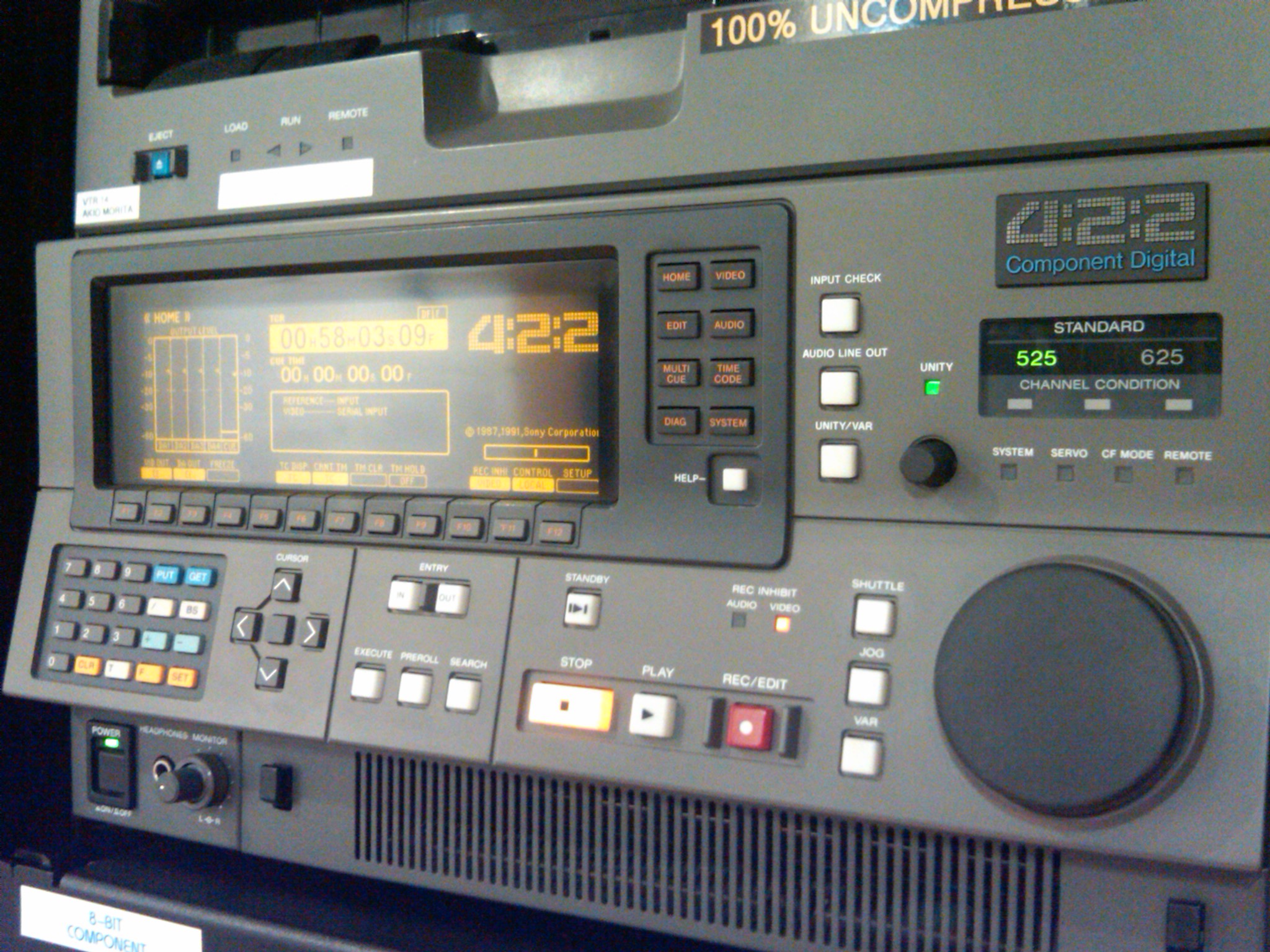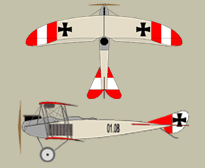|
D-1
D1, D01, D.I, D.1 or D-1 can refer to: Science and technology Biochemistry and medicine * ATC code D01 ''Antifungals for dermatological use'', a subgroup of the Anatomical Therapeutic Chemical Classification System * Dopamine receptor D1, a protein * Haplogroup D1 (Y-DNA) * Vitamin D1, a form of Vitamin D * DI, Iodothyronine deiodinase type I, an enzyme involved with thyroid hormones Technology * Nikon D1, a digital single-lens reflex camera * D1, former brand of T-Mobile in Germany * D1, an abbreviation for DOCSIS 1.0 1.0, an international telecommunications standard * D-1 (Sony), an early digital video recording format * STS-61-A, also known as D-1, the 22nd mission of NASA's Space Shuttle program * D-1, from the Proton (rocket family), Russian rockets * Mercedes D.I, a 1913 German aircraft engine Military World War I fighter aircraft * AEG D.I * Albatros D.I * Halberstadt D.I, experimental version of Halberstadt D.II (and Aviatik D.I variant) * Aviatik (Berg) D.I * ... [...More Info...] [...Related Items...] OR: [Wikipedia] [Google] [Baidu] |
Vitamin D
Vitamin D is a group of fat-soluble secosteroids responsible for increasing intestinal absorption of calcium, magnesium, and phosphate, and many other biological effects. In humans, the most important compounds in this group are vitamin D3 (cholecalciferol) and vitamin D2 (ergocalciferol). The major natural source of the vitamin is synthesis of cholecalciferol in the lower layers of epidermis of the skin through a chemical reaction that is dependent on sun exposure (specifically UVB radiation). Cholecalciferol and ergocalciferol can be ingested from the diet and supplements. Only a few foods, such as the flesh of fatty fish, naturally contain significant amounts of vitamin D. In the U.S. and other countries, cow's milk and plant-derived milk substitutes are fortified with vitamin D, as are many breakfast cereals. Mushrooms exposed to ultraviolet light contribute useful amounts of vitamin D2. Dietary recommendations typically assume that all of a person's vitamin D is taken ... [...More Info...] [...Related Items...] OR: [Wikipedia] [Google] [Baidu] |
D-1 (Sony)
D-1 or 4:2:2 Component Digital is an SMPTE digital recording video standard, introduced in 1986 through efforts by SMPTE engineering committees. It started as a Sony and Bosch - BTS product and was the first major professional digital video format. SMPTE standardized the format within ITU-R 601 (orig. CCIR-601), also known as Rec. 601, which was derived from SMPTE 125M and EBU 3246-E standards. Format D-1 or 4:2:2 D-1 (1986) was a major feat in real time, broadcast quality digital video recording. It stores uncompressed digitized component video, encoded at Y'CbCr 4:2:2 using the CCIR 601 raster format with 8 bits, along with PCM audio tracks as well as timecode on a 3/4 inch (19 mm) videocassette tape (though not to be confused with the ubiquitous 3/4-inch U-Matic/U-Matic SP cassette). The uncompressed component video used enormous bandwidth for its time: 173 Mbit/sec (bit rate). The maximum record time on a D-1 tape is 94 minutes. Because of the uncompromisi ... [...More Info...] [...Related Items...] OR: [Wikipedia] [Google] [Baidu] |
STS-61-A
STS-61-A (also known as Spacelab D-1) was the 22nd mission of NASA's Space Shuttle program. It was a scientific Spacelab mission, funded and directed by West Germany – hence the non-NASA designation of D-1 (for Deutschland-1). STS-61-A was the ninth and last successful flight of Space Shuttle ''Challenger''. STS-61-A holds the current record for the largest crew - eight people - aboard any single spacecraft for the entire period from launch to landing. The mission carried the NASA/European Space Agency (ESA) Spacelab module into orbit with 76 scientific experiments on board, and was declared a success. Payload operations were controlled from the German Space Operations Center in Oberpfaffenhofen, West Germany, instead of from the regular NASA control center. This was the first spaceflight to include multiple crewmembers from any single country other than the United States or Soviet Union. Crew Backup crew Crew seating arrangements Mission summary Space Shutt ... [...More Info...] [...Related Items...] OR: [Wikipedia] [Google] [Baidu] |
Proton (rocket Family)
Proton (Russian: Протон) (formal designation: UR-500) is an expendable launch system used for both commercial and Russian government space launches. The first Proton rocket was launched in 1965. Modern versions of the launch system are still in use as of 2022, making it one of the most successful heavy boosters in the history of spaceflight. The components of all Protons are manufactured at the Khrunichev State Research and Production Space Center factory in Moscow and Chemical Automatics Design Bureau in Voronezh, then transported to the Baikonur Cosmodrome, where they are assembled at Site 91 to form the launch vehicle. Following payload integration, the rocket is then brought to the launch pad horizontally by rail, and raised into vertical position for launch. As with many Soviet rockets, the names of recurring payloads became associated with the launch vehicle itself. The moniker "Proton" originates from a series of similarly named scientific satellites, which were amo ... [...More Info...] [...Related Items...] OR: [Wikipedia] [Google] [Baidu] |
Hansa-Brandenburg D
The Hansa-Brandenburg B.I was an unarmed military trainer and reconnaissance biplane of World War I, flown by the Austro-Hungarian Air Service. Early models were known internally to the Hansa-Brandenburg firm as the type D, while later models with a more powerful engine were designated FD. This aircraft was one of the earliest designs of Ernst Heinkel, who was working for Hansa-Brandenburg at the time. It was an entirely conventional two-bay biplane with staggered wings of unequal span. The pilot and observer sat in tandem in a long open cockpit. The aircraft was produced under license by Aero, both during the war and afterwards (when it became known as the Aero Ae 01), and also by Letov, as the Š10.Krzysztof Chołoniewski, Wiesław Bączkowski (in Polish), ''Samoloty wojskowe obcych konstrukcji 1918-1939'' ilitary aircraft of foreign designs 1918-1939 Warsaw, WKiŁ, 1987. , p. 7 Experience gained with this design would provide Aero with the basis for a number of derivative ci ... [...More Info...] [...Related Items...] OR: [Wikipedia] [Google] [Baidu] |
Junkers D
Junkers Flugzeug- und Motorenwerke AG (JFM, earlier JCO or JKO in World War I, English: Junkers Aircraft and Motor Works) more commonly Junkers , was a major German aircraft and aircraft engine manufacturer. It was founded there in Dessau, Germany, in 1895 by Hugo Junkers, initially manufacturing boilers and radiators. During World War I and following the war, the company became famous for its pioneering all-metal aircraft. During World War II the company produced the German army's Luftwaffe planes, as well as piston and jet aircraft engines, albeit in the absence of its founder, who had been removed by the Nazis in 1934. History Early inter-war period In the immediate post-war era, Junkers used their J8 layout as the basis for the F-13, first flown on 25 June 1919 and certified airworthy in July of the same year. This four passenger monoplane was the world's first all-metal airliner. Of note, in addition to significant European sales, some twenty-five of these airplanes w ... [...More Info...] [...Related Items...] OR: [Wikipedia] [Google] [Baidu] |
Knoller D (born 1976), Israeli actor
{{surname ...
Knoller is a surname. Notable people with the surname include: * David Knoller, American producer, director, and writer *Mark Knoller, American journalist *Martin Knoller (1725–1804), Austrian-Italian painter *Ohad Knoller Ohad Knoller ( he, אוהד קנולר; born 28 September 1976) is an Israeli actor. He had roles in the Eytan Fox films ''Yossi & Jagger'' and '' The Bubble'', and the Steven Spielberg film ''Munich''. Background Knoller was born in Tel Aviv, Is ... [...More Info...] [...Related Items...] OR: [Wikipedia] [Google] [Baidu] |
Imperial And Royal Aviation Troops
The Austro-Hungarian Aviation Troops or Imperial and Royal Aviation Troops (german: Kaiserliche und Königliche Luftfahrtruppen or , hu, Császári és Királyi Légjárócsapatok) were the air force of the Austro-Hungarian Empire until the empire's demise in 1918; it saw combat on both the Eastern Front and Italian Front during World War I. History The Air Service began in 1893 as a balloon corps () and would later be re-organized in 1912 under the command of Major Emil Uzelac, an army engineering officer. The Air Service would remain under his command until the end of World War I in 1918. The first officers of the air force were private pilots with no military aviation training. At the outbreak of war, the Air Service was composed of 10 observation balloons, 85 pilots and 39 operational aircraft. By the end of 1914, there were 147 operational aircraft deployed in 14 units. Just as Austria-Hungary fielded a joint army and navy, they also had army and naval aviation arm ... [...More Info...] [...Related Items...] OR: [Wikipedia] [Google] [Baidu] |
ATC Code D01
D01A Antifungals for topical use D01AA Antibiotics :D01AA01 Nystatin :D01AA02 Natamycin :D01AA03 Hachimycin :D01AA04 Pecilocin :D01AA06 Mepartricin :D01AA07 Pyrrolnitrin :D01AA08 Griseofulvin :D01AA20 Combinations D01AC Imidazole and triazole derivatives :D01AC01 Clotrimazole :D01AC02 Miconazole :D01AC03 Econazole :D01AC04 Clomidazole :D01AC05 Isoconazole :D01AC06 Tiabendazole :D01AC07 Tioconazole :D01AC08 Ketoconazole :D01AC09 Sulconazole :D01AC10 Bifonazole :D01AC11 Oxiconazole :D01AC12 Fenticonazole :D01AC13 Omoconazole :D01AC14 Sertaconazole :D01AC15 Fluconazole :D01AC16 Flutrimazole :D01AC17 Eberconazole :D01AC18 Luliconazole :D01AC19 Efinaconazole :D01AC20 Imidazoles/triazoles in combination with corticosteroids :D01AC21 Neticonazole :D01AC22 Lanoconazole :D01AC52 Miconazole, combinations :D01AC60 Bifonazole, combinations :QD01AC90 Enilconazole D01AE Other antifungals for topical use :D01AE01 Bromochlorosalicylanilide :D01AE02 Methylrosaniline :D01AE03 Tribromometacresol :D ... [...More Info...] [...Related Items...] OR: [Wikipedia] [Google] [Baidu] |
Flugzeugbau Friedrichshafen
Flugzeugbau Friedrichshafen GmbH was a German aircraft manufacturing company. Overview The company was founded in 1912 in Friedrichshafen, Germany by Theodor Kober who had previously worked for the Zeppelin company. The town, which is located by the Bodensee, was already famous in aviation circles as the place where Zeppelin airships were built. During the First World War, Flugzeugbau Friedrichshafen mainly built seaplanes for the ''Marineflieger, Marine-Fliegerabteilung'' units of the Imperial German Navy, and a highly successful series of land based medium bombers for the Luftstreitkräfte, Imperial Air Service under the aegis of head designer Karl Gehlen. After the Armistice, the company took over the old Zeppelin shed at Manzell. They would also start production in Weingarten, Württemberg, Weingarten and Warnemünde. When the company failed in 1923, their production facilities were taken over by Dornier Flugzeugwerke. References * {{Fairchild Aircraft Defunct aircraf ... [...More Info...] [...Related Items...] OR: [Wikipedia] [Google] [Baidu] |



